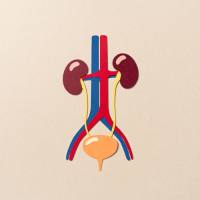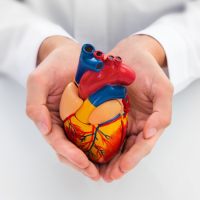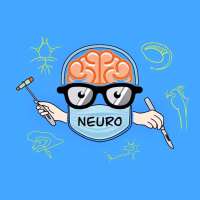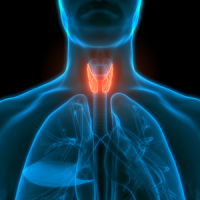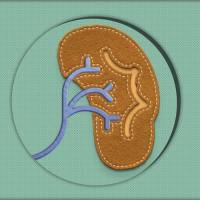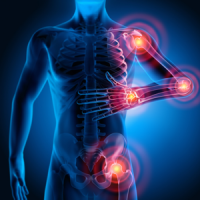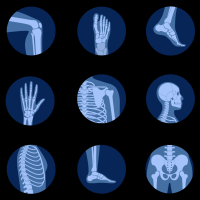康复科研博士团:运动康复SCI论文导读2024-4
新刊速递
每月带您读英文核心,这个月英文文献分享刚刚开始!
本文内容较长,为了优化阅读体验,欢迎大家点击标题展开相应内容。
1.《British Journal of Sports Medicine 》
JCR:Q1;IF:18.475
No sign of weakness: a systematic review and meta-analysis of hip and calf muscle strength after anterior cruciate ligament injury
无无力迹象:前交叉韧带损伤后髋部和小腿肌肉力量的系统评价和荟萃分析
【Abstract】
Objective:We aimed to determine hip and lower-leg muscle strength in people after ACL injury compared with an uninjured control group (between people) and the uninjured contralateral limb (between limbs).
Design:Systematic review with meta-analysis.
Data sources:MEDLINE, EMBASE, CINAHL, Scopus, Cochrane CENTRAL and SportDiscus to 28 February 2023.
Eligibility criteria:Primary ACL injury with mean age 18–40 years at time of injury. Studies had to measure hip and/or lower-leg muscle strength quantitatively (eg, dynamometer) and report muscle strength for the ACL-injured limb compared with: (i) an uninjured control group and/or (ii) the uninjured contralateral limb. Risk of bias was assessed according to Cochrane Collaboration domains.
Results:Twenty-eight studies were included (n=23 measured strength ≤12 months post-ACL reconstruction). Most examined hip abduction (16 studies), hip extension (12 studies) and hip external rotation (7 studies) strength. We found no meaningful difference in muscle strength between people or between limbs for hip abduction, extension, internal rotation, flexion or ankle plantarflexion, dorsiflexion (estimates ranged from −9% to +9% of comparator). The only non-zero differences identified were in hip adduction (24% stronger on ACL limb (95% CI 8% to 42%)) and hip external rotation strength (12% deficit on ACL limb (95% CI 6% to 18%)) compared with uninjured controls at follow-ups >12 months, however both results stemmed from only two studies. Certainty of evidence was very low for all outcomes and comparisons, and drawn primarily from the first year post-ACL reconstruction.
Conclusion:Our results do not show widespread or substantial muscle weakness of the hip and lower-leg muscles after ACL injury, contrasting deficits of 10%–20% commonly reported for knee extensors and flexors. As it is unclear if deficits in hip and lower-leg muscle strength resolve with appropriate rehabilitation or no postinjury or postoperative weakness occurs, individualised assessment should guide training of hip and lower-leg strength following ACL injury.
【摘要】
目的:我们旨在确定前交叉韧带损伤后患者的髋部和小腿肌肉力量,与未受伤的对照组(人与人之间)和未受伤的对侧肢体(四肢之间)相比。
设计:荟萃分析的系统评价。
数据源:MEDLINE、EMBASE、CINAHL、Scopus、Cochrane CENTRAL和SportDiscus至2023年2月28日。
纳入标准:原发性前交叉韧带损伤,受伤时平均年龄为 18-40 岁。研究必须定量测量髋部和/或小腿肌肉力量(例如,测力计),并报告ACL损伤肢体的肌肉力量与以下情况的比较:(i)未受伤的对照组和/或(ii)未受伤的对侧肢体。根据Cochrane协作网(Cochrane Collaboration)域评估偏倚风险。
结果:共纳入28项研究(n=23项测量强度≤ACL重建后12个月)。大多数研究对象包括髋关节外展(16项研究)、髋关节伸展(12项研究)和髋关节外旋(7项研究)力量。我们发现人与人之间或四肢之间的肌肉力量在髋关节外展、伸展、内旋、屈曲或踝关节跖屈、背屈方面没有有意义的差异(估计范围为对照组的-9%至+9%)。在随访>12个月)中,与未受伤的对照组相比,髋关节内收(ACL肢体强24%(95%CI [8%, 42%])和髋关节外旋力量(ACL肢体缺陷12%(95%CI [6%, 18%)],但两项结果仅来自两项研究。所有结局和对照的证据质量都非常低,主要来自ACL重建后的第一年。
结论:我们的研究结果未显示前交叉韧带损伤后髋部和小腿肌肉广泛或实质性的肌肉无力,与膝伸肌和屈肌通常报告的 10%-20% 的缺陷形成鲜明对比。由于尚不清楚髋部和小腿肌肉力量的缺陷是否在适当的康复后得到解决,或者没有发生损伤后或术后无力,因此个体化评估应指导前交叉韧带损伤后髋部和小腿力量的训练。
2.《Journal of Physiotherapy》
JCR:Q1;IF:12.1
Some types of exercise interventions are more effective than others in people with coronary heart disease: systematic review and network meta-analysis
对冠心病患者进行某些类型的运动干预比其他干预更有效:系统综述和网络荟萃分析
【Abstract】
Question:What are the effects of different types of exercise treatments on oxygen consumption, quality of life and mortality in people with coronary heart disease?
Design:Systematic review with network meta-analysis of randomised controlled trials.
Participants:Adults with coronary heart disease.
Intervention:Exercise interventions including aerobic (continuous or high-intensity interval) training, resistance training, respiratory muscle exercises, water-based exercises, yoga, Tai chi, Qigong exercises and a combination of different types of exercise.
Outcome measures:Oxygen consumption, quality of life and mortality.
Results:This review included 178 randomised controlled trials with 19,143 participants. Several exercise interventions improved peak oxygen consumption (mL/kg/min): high-intensity interval training (MD 4.5, 95% CI 3.7 to 5.4); combined water-based exercises and moderate-intensity continuous training (MD 3.7, 95% CI 1.3 to 6.0); combined aerobic and resistance exercise (MD 3.4, 95% CI 2.5 to 4.3); water-based exercises (MD 3.4, 95% CI 0.6 to 6.2); combined respiratory muscle training and aerobic exercise (MD 3.2, 95% CI 0.6 to 5.8); Tai chi (MD 3.0, 95% CI 1.0 to 5.0); moderate-intensity continuous training (MD 3.0, 95% CI 2.3 to 3.6); high-intensity continuous training (MD 2.7, 95% CI 1.6 to 3.8); and resistance training (MD 2.2, 95% CI 0.6 to 3.7). Quality of life was improved by yoga (SMD 1.5, 95% CI 0.5 to 2.4), combined aerobic and resistance exercise (SMD 1.2, 95% CI 0.6 to 1.7), moderate-intensity continuous training (SMD 1.1, 95% CI 0.6 to 1.6) and high-intensity interval training (SMD 0.9, 95% CI 0.1 to 1.6). All-cause mortality was reduced by continuous aerobic exercise (RR 0.67, 95% CI 0.53 to 0.86) and combined aerobic and resistance exercise (RR 0.58, 95% CI 0.36 to 0.94). Continuous aerobic exercise also reduced cardiovascular mortality (RR 0.56, 95% CI 0.42 to 0.74).
Conclusion:People with coronary heart disease may use a range of exercise modalities to improve oxygen consumption, quality of life and mortality.
【摘要】
问题:不同类型的运动治疗对冠心病患者的耗氧量、生活质量和死亡率有何影响?
设计:随机对照试验的网络荟萃分析的系统评价。
参与者:患有冠心病的成人。
介入:运动干预包括有氧(连续或高强度间歇)训练、阻力训练、呼吸肌练习、水上运动、瑜伽、太极拳、气功练习和不同类型的运动组合。
结果测量:耗氧量、生活质量和死亡率。
结果:本综述纳入了178项随机对照试验,涉及19,143名受试者。一些运动干预改善了峰值耗氧量(mL/kg/min):高强度间歇训练(MD 4.5,95% CI 3.7-5.4);水上运动和中等强度持续训练相结合(MD 3.7,95% CI 1.3-6.0);有氧运动和阻力运动联合(MD 3.4,95% CI 2.5-4.3);水上运动(MD 3.4,95% CI 0.6-6.2);呼吸肌联合训练和有氧运动(MD 3.2,95% CI 0.6-5.8);太极拳(MD 3.0,95% CI 1.0-5.0);中等强度持续训练(MD 3.0,95% CI 2.3-3.6);高强度持续训练(MD 2.7,95% CI 1.6-3.8);和阻力训练(MD 2.2,95% CI 0.6-3.7)。瑜伽(SMD 1.5,95% CI 0.5-2.4)、有氧运动和阻力运动(SMD 1.2,95% CI 0.6-1.7)、中等强度持续训练(SMD 1.1,95% CI 0.6-1.6)和高强度间歇训练(SMD 0.9,95% CI 0.1-1.6)改善了生活质量。持续有氧运动(RR 0.67,95% CI 0.53-0.86)和有氧运动和阻力运动(RR 0.58,95% CI 0.36-0.94)可降低全因死亡率。持续的有氧运动也降低了心血管死亡率(RR 0.56,95% CI 0.42-0.74)。
结论:冠心病患者可以使用一系列运动方式来改善耗氧量、生活质量和死亡率。
In adults with persistent dyspnoea following pulmonary embolism, an exercise-based rehabilitation program improved exercise capacity and quality of life compared with usual care
对于肺栓塞后出现持续性呼吸困难的成人,与常规护理相比,以运动为基础的康复计划可提高运动能力和生活质量
【Abstract】
Question: In adults with persistent dyspnoea following pulmonary embolism, what is the effect of an 8-week exercise-based rehabilitation program on exercise capacity, symptoms and quality of life when compared with usual care?
Design: Randomised controlled trial with concealed allocation and blinded outcome assessment.
Setting: Two hospitals in Norway.
Participants: Adults (18 to 75 years) following pulmonary embolism greater than isolated subsegmental emboli, diagnosed with CT pulmonary angiography 6 to 72 months prior to study inclusion, and persistent self-reported dyspnoea. Exclusion criteria were chronic pulmonary diseases, heart failure, significant valvular heart disease, active malignancy or recurrent, metastatic or inoperable disease. Randomisation of 211 participants allocated 108 to the experimental group and 103 to the control group.
Interventions: Participants in the experimental group underwent an 8-week supervised outpatient exercise program delivered twice a week for 1 hour. The exercise program included relaxation, interval training at moderate intensity and resistance training. This group also received a single 90-minute educational session on pulmonary embolism, management of breathlessness and the potential benefits of exercise and physical activity. The control group received usual care.
Outcome measures: The primary outcome was exercise capacity measured via the incremental shuttle walk test. Secondary outcomes included endurance exercise capacity, health status, severity of dyspnoea and quality of life, measured with the endurance shuttle walk test, the EQ-5D-5L questionnaire, the shortness of breath questionnaire, and the pulmonary embolism quality of life questionnaire, respectively.
Results: A total of 176 participants completed the study (89 in the experimental and 87 in the control group). At completion of the 8 weeks, compared with the control group, the experimental group demonstrated better incremental shuttle walk distance (MD 53 m, 95% CI 18 to 88) and quality of life (MD –0.04, 95% CI –0.09 to 0.00). No clear between-group difference was demonstrated in endurance exercise capacity (MD 62 seconds, 95% CI –42 to 166), health status (MD 0.03, 95% CI –0.01 to 0.07) or dyspnoea (MD –1.1, 95% CI –4.6 to 2.4).
Conclusion: In adults with persistent dyspnoea following pulmonary embolism, an 8-week exercise-based rehabilitation program improved exercise capacity and pulmonary embolism-related quality of life.
【摘要】
问题:在肺栓塞后持续性呼吸困难的成人中,与常规护理相比,为期 8 周的运动康复计划对运动能力、症状和生活质量有何影响?
设计:随机对照试验,隐蔽分配和盲法结局评估。周边环境:挪威的两家医院。
参与者:成人(18 至 75 岁)肺栓塞大于孤立的亚节段栓塞,在研究纳入前 6 至 72 个月经 CT 肺血管造影诊断,以及持续的自我报告呼吸困难。排除标准是慢性肺病、心力衰竭、严重瓣膜性心脏病、活动性恶性肿瘤或复发性、转移性或无法手术的疾病。211 名参与者的随机化将 108 名分配给实验组,103 名分配给对照组。
干预措施:实验组的参与者接受了为期 8 周的监督门诊锻炼计划,每周两次,每次 1 小时。锻炼计划包括放松、中等强度的间歇训练和阻力训练。该小组还接受了一次 90 分钟的教育课程,内容涉及肺栓塞、呼吸困难的管理以及运动和身体活动的潜在益处。对照组接受常规护理。
结果测量:主要结局是通过增量穿梭步行测试测量的运动能力。次要结局包括耐力运动能力、健康状况、呼吸困难的严重程度和生活质量,分别通过耐力穿梭步行试验、EQ-5D-5L问卷、呼吸急促问卷和肺栓塞生活质量问卷测量。
结果:共有 176 名参与者完成了研究(实验组 89 名,对照组 87 名)。在8周结束时,与对照组相比,实验组表现出更好的增量穿梭步行距离(MD 53 m,95% CI 18-88)和生活质量(MD -0.04,95% CI -0.09-0.00)。在耐力运动能力(MD 62秒,95% CI -42-166)、健康状况(MD 0.03,95% CI -0.01-0.07)或呼吸困难(MD -1.1,95% CI -4.6-2.4)方面没有明显的组间差异。
结论:在肺栓塞后持续性呼吸困难的成人中,为期 8 周的运动康复计划改善了运动能力和肺栓塞相关的生活质量。
3.《Journal of Sport and Health Science》
JCR:Q1;IF:11.7
Effect of resistance training volume on body adiposity, metabolic risk,
and inflammation in postmenopausal and older females: Systematic review
and meta-analysis of randomized controlled trials
阻力训练量对绝经后和老年女性身体脂肪含量、代谢风险和炎症的影响:随机对照试验的系统回顾和荟萃分析
【Abstract】
Purpose:This meta-analytical study aimed to explore the effects of resistance training (RT) volume on body adiposity, metabolic risk, and inflammation in postmenopausal and older females.
Methods:A systematic search was performed for randomized controlled trials in PubMed, Scopus, Web of Science, and SciELO. Randomized controlled trials with postmenopausal and older females that compared RT effects on body adiposity, metabolic risk, and inflammation with a control group (CG) were included. Independent reviewers selected the studies, extracted the data, and performed the risk of bias and certainty of the evidence (Grading of Recommendations, Assessment, Development, and Evaluation (GRADE)) evaluations. Total body and abdominal adiposity, blood lipids, glucose, and C-reactive protein were included for meta-analysis. A random-effects model, standardized mean difference (Hedges’ g), and 95% confidence interval (95%CI) were used for meta-analysis.
Results:Twenty randomized controlled trials (overall risk of bias: some concerns; GRADE: low to very low) with overweight/obese postmenopausal and older females were included. RT groups were divided into low-volume RT (LVRT, ∼44 sets/week) and high-volume RT (HVRT, ∼77 sets/week). Both RT groups presented improved body adiposity, metabolic risk, and inflammation when compared to CG. However, HVRT demonstrated higher effect sizes than LVRT for glucose (HVRT = –1.19; 95%CI: –1.63 to –0.74; LVRT = –0.78; 95%CI:–1.15 to –0.41) and C-reactive protein (HVRT = –1.00; 95%CI: –1.32 to –0.67; LVRT = –0.34; 95%CI, –0.63 to –0.04)) when compared to CG.
Conclusion:Compared to CG, HVRT protocols elicit greater improvements in metabolic risk and inflammation outcomes than LVRT in overweight/obese postmenopausal and older females.
【摘要】
目的:这项荟萃分析研究旨在探讨阻力训练 (RT) 量对绝经后和老年女性身体肥胖、代谢风险和炎症的影响。
方法:对PubMed、Scopus、Web of Science和SciELO的随机对照试验进行了系统检索。纳入了绝经后和老年女性的随机对照试验,这些试验比较了放疗对身体肥胖、代谢风险和炎症的影响,对照组(CG)进行了比较。独立评价员选择研究,提取资料,并进行偏倚风险和证据质量评估(Grading of Recommendations, Assessment, Development, and Evaluation, GRADE)评估。包括全身和腹部肥胖、血脂、葡萄糖和 C 反应蛋白进行 meta 分析。meta分析采用随机效应模型、标准化均数差(Hedges' g)和95%置信区间(95%CI)。
结果:20项随机对照试验(总体偏倚风险:一些问题;GRADE:低到非常低)包括超重/肥胖绝经后和老年女性。放疗组分为低容量放疗组(LVRT,∼44组/周)和高放疗组(HVRT,∼77组/周)。与CG相比,两个放疗组都表现出改善的身体肥胖、代谢风险和炎症。然而,HVRT在葡萄糖方面显示出比LVRT更高的效应量(HVRT = –1.19;95%CI:–1.63至–0.74;LVRT = –0.78;95%CI:-1.15-0.41)和C反应蛋白(HVRT=-1.00;95%CI:-1.32-0.67;LVRT = –0.34;95%CI,-0.63至-0.04)),与CG相比。
结论:与 CG 相比,HVRT 方案在超重/肥胖绝经后和老年女性的代谢风险和炎症结局方面比 LVRT 有更大的改善。
Exercised blood plasma promotes hippocampal neurogenesis in the
Alzheimer's disease rat brain
运动血浆可促进阿尔茨海默病大鼠大脑海马神经元的生成
【Abstract】
Background:Exercise training promotes brain plasticity and is associated with protection against cognitive impairment and Alzheimer's disease (AD). These beneficial effects may be partly mediated by blood-borne factors. Here we used an in vitro model of AD to investigate effects of blood plasma from exercise-trained donors on neuronal viability, and an in vivo rat model of AD to test whether such plasma impacts cognitive function, amyloid pathology, and neurogenesis.
Methods:Mouse hippocampal neuronal cells were exposed to AD-like stress using amyloid-β and treated with plasma collected from human male donors 3 h after a single bout of high-intensity exercise. For in vivo studies, blood was collected from exercise-trained young male Wistar rats (high-intensity intervals 5 days/week for 6 weeks). Transgenic AD rats (McGill-R-Thy1-APP) were injected 5 times/fortnight for 6 weeks at 2 months or 5 months of age with either (a) plasma from the exercise-trained rats, (b) plasma from sedentary rats, or (c) saline. Cognitive function, amyloid plaque pathology, and neurogenesis were assessed. The plasma used for the treatment was analyzed for 23 cytokines.
Results:Plasma from exercised donors enhanced cell viability by 44.1% (p = 0.032) and reduced atrophy by 50.0% (p < 0.001) in amyloid-β-treated cells. In vivo exercised plasma treatment did not alter cognitive function or amyloid plaque pathology but did increase hippocampal neurogenesis by ∼3 fold, regardless of pathological stage, when compared to saline-treated rats. Concentrations of 7 cytokines were significantly reduced in exercised plasma compared to sedentary plasma.
Conclusion:Our proof-of-concept study demonstrates that plasma from exercise-trained donors can protect neuronal cells in culture and promote adult hippocampal neurogenesis in the AD rat brain. This effect may be partly due to reduced pro-inflammatory signaling molecules in exercised plasma.
【摘要】
背景:运动训练可促进大脑的可塑性,并与预防认知障碍和阿尔茨海默病(AD)有关。这些有益作用可能部分由血液传播因素介导。在这里,我们使用AD的体外模型来研究来自运动训练的供体的血浆对神经元活力的影响,并使用AD的体内大鼠模型来测试这种血浆是否影响认知功能,淀粉样蛋白病理学和神经发生。
方法:使用淀粉样蛋白β将小鼠海马神经元细胞暴露于AD样应激,并在单轮高强度运动后3小时用从人类男性供体收集的血浆处理。对于体内研究,从受过运动训练的年轻雄性Wistar大鼠(高强度间隔5天/周,持续6周)收集血液。转基因AD大鼠(McGill-R-Thy1-APP)在2个月或5个月大时每两周注射5次,持续6周,(a)来自运动训练的大鼠的血浆,(b)久坐不动的大鼠的血浆,或(c)生理盐水。评估认知功能、淀粉样斑块病理学和神经发生。分析用于治疗的血浆中的 23 种细胞因子。
结果:在淀粉样蛋白β处理的细胞中,来自运动供体的血浆可使细胞活力提高 44.1% (p = 0.032),并将萎缩减少 50.0% (p < 0.001)。与生理盐水治疗的大鼠相比,体内运动血浆治疗不会改变认知功能或淀粉样斑块病理学,但无论病理阶段如何,海马神经发生都会增加约3倍。与久坐不动的血浆相比,运动血浆中 7 种细胞因子的浓度显着降低。
结论:我们的概念验证研究表明,来自运动训练的供体的血浆可以保护培养中的神经元细胞,并促进AD大鼠大脑中的成年海马神经发生。这种作用可能部分是由于运动血浆中促炎信号分子的减少。
4.《BioMed Central 》
JCR:Q1;IF:10.66
Sex differences in the physiological responses to cardiac rehabilitation: a systematic review
心脏康复生理反应的性别差异:系统性综述
【Abstract】
Background:Heart disease is one of the leading causes of death in Canada. Many heart disease patients are referred for cardiac rehabilitation, a multidisciplinary outpatient program often consisting of exercise training. Cardiac rehabilitation has been proven to be a successful secondary preventative measure in reducing mortality and improving overall health in heart disease patients, and its completion is important for both sexes as there is growing evidence that women benefit as much as men, if not more, with regard to mortality. It is important to note that previous studies have shown that healthy men and women respond differently to aerobic and resistance training, possibly due to hormones, body composition, autonomic and/or cardiovascular differences. However, evaluating sex differences in the efficacy of standard cardiac rehabilitation programs has not yet been fully explored with many studies investigating clinical or anthropometric data but not physiological outcomes. This systematic review aimed to investigate physiological differences in male and female heart disease patients after cardiac rehabilitation. The inclusion criteria were purposefully broad to encompass many cardiac rehabilitation scenarios, many cardiac disease states, and various program lengths and intensities with the intention of highlighting strengths and weaknesses of the current body of literature.
Methods:To conduct a synthesis without meta-analysis, a search strategy was generated to examine the relationships between heart disease patients, a supervised exercise program, physiological outcomes, and sex differences. The review was registered (Prospero: CRD42021251614) and the following databases were searched from inception to 19 December 2023: APA PsycInfo (Ovid), CINAHL Complete (EBSCOhost), Embase (Ovid), Emcare Nursing (Ovid), Medline All (Ovid; includes PubMed non-Medline), and Web of Science Core Collection. Eighty-eight studies pertaining to fitness, metabolism, body composition, respiratory function, cardiac function and C-reactive protein underwent data extraction.
Results and conclusions:Importantly, this review suggests that men and women respond similarly to a wide-range of cardiac rehabilitation programs in most physiological variables. However, many studies discussing maximal oxygen consumption, functional capacity, six-minute walk distances, and grip strength suggest that men benefit more. Further research is required to address certain limitations, such as appropriate statistical methods and type/intensity of exercise interventions.
【摘要】
背景:心脏病是加拿大的主要死亡原因之一。许多心脏病患者被转诊进行心脏康复,这是一项多学科门诊计划,通常包括运动训练。心脏康复已被证明是降低心脏病患者死亡率和改善整体健康状况的一种成功的二级预防措施,其完成对男女都很重要,因为越来越多的证据表明,在死亡率方面,女性与男性一样受益,甚至更多。需要注意的是,先前的研究表明,健康的男性和女性对有氧和阻力训练的反应不同,这可能是由于激素、身体成分、自主神经和/或心血管差异。然而,评估标准心脏康复计划疗效的性别差异尚未得到充分探索,许多研究调查了临床或人体测量数据,但没有调查生理结果。本系统综述旨在调查男性和女性心脏病患者在心脏康复后的生理差异。纳入标准特意宽泛,以涵盖许多心脏康复方案、许多心脏病状态以及各种项目长度和强度,旨在突出当前文献的优点和缺点。
方法:为了在没有荟萃分析的情况下进行综合,我们制定了一种检索策略来检查心脏病患者、监督锻炼计划、生理结果和性别差异之间的关系。该综述已注册(Prospero:CRD42021251614),从建库到2023年12月19日检索了以下数据库:APA PsycInfo(Ovid)、CINAHL Complete(EBSCOhost)、Embase(Ovid)、Emcare Nursing(Ovid)、Medline All(Ovid;包括PubMed非Medline)和Web of Science Core Collection。对88项涉及健身、代谢、身体成分、呼吸功能、心脏功能和C反应蛋白的研究进行了资料提取。
结果和结论:重要的是,本综述表明,在大多数生理变量中,男性和女性对各种心脏康复计划的反应相似。然而,许多讨论最大耗氧量、功能能力、六分钟步行距离和握力的研究表明,男性受益更多。需要进一步的研究来解决某些局限性,例如适当的统计方法和运动干预的类型/强度。







